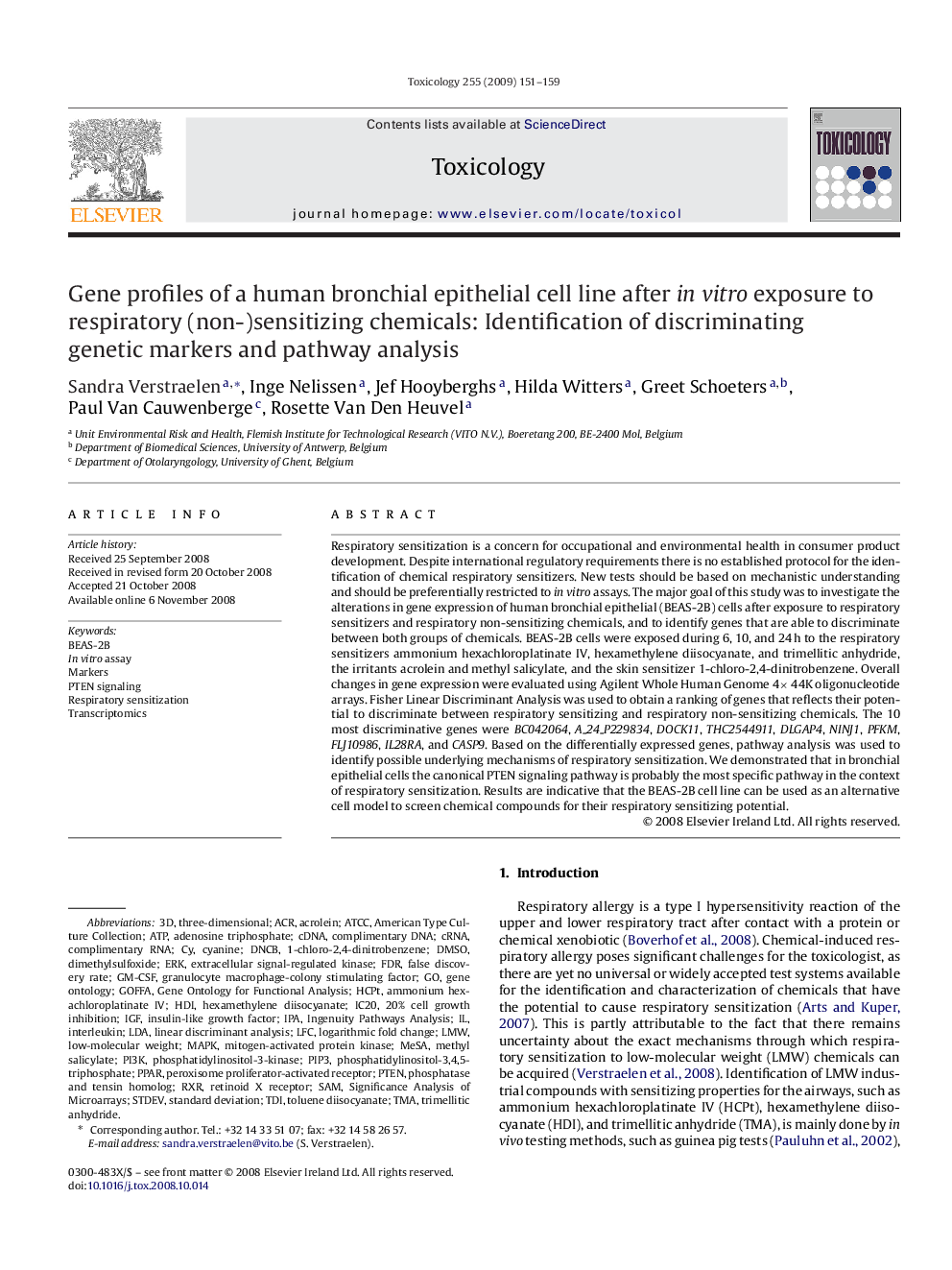| کد مقاله | کد نشریه | سال انتشار | مقاله انگلیسی | نسخه تمام متن |
|---|---|---|---|---|
| 2596911 | 1132557 | 2009 | 9 صفحه PDF | دانلود رایگان |

Respiratory sensitization is a concern for occupational and environmental health in consumer product development. Despite international regulatory requirements there is no established protocol for the identification of chemical respiratory sensitizers. New tests should be based on mechanistic understanding and should be preferentially restricted to in vitro assays. The major goal of this study was to investigate the alterations in gene expression of human bronchial epithelial (BEAS-2B) cells after exposure to respiratory sensitizers and respiratory non-sensitizing chemicals, and to identify genes that are able to discriminate between both groups of chemicals. BEAS-2B cells were exposed during 6, 10, and 24 h to the respiratory sensitizers ammonium hexachloroplatinate IV, hexamethylene diisocyanate, and trimellitic anhydride, the irritants acrolein and methyl salicylate, and the skin sensitizer 1-chloro-2,4-dinitrobenzene. Overall changes in gene expression were evaluated using Agilent Whole Human Genome 4× 44K oligonucleotide arrays. Fisher Linear Discriminant Analysis was used to obtain a ranking of genes that reflects their potential to discriminate between respiratory sensitizing and respiratory non-sensitizing chemicals. The 10 most discriminative genes were BC042064, A_24_P229834, DOCK11, THC2544911, DLGAP4, NINJ1, PFKM, FLJ10986, IL28RA, and CASP9. Based on the differentially expressed genes, pathway analysis was used to identify possible underlying mechanisms of respiratory sensitization. We demonstrated that in bronchial epithelial cells the canonical PTEN signaling pathway is probably the most specific pathway in the context of respiratory sensitization. Results are indicative that the BEAS-2B cell line can be used as an alternative cell model to screen chemical compounds for their respiratory sensitizing potential.
Journal: Toxicology - Volume 255, Issue 3, 31 January 2009, Pages 151–159